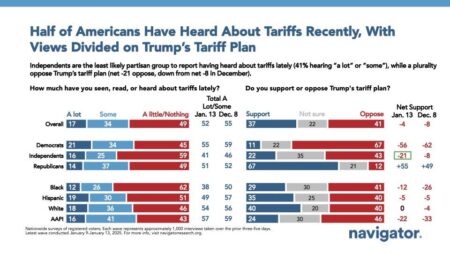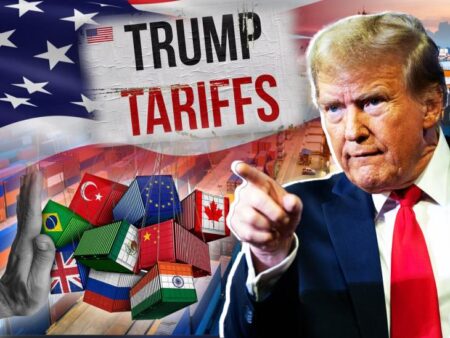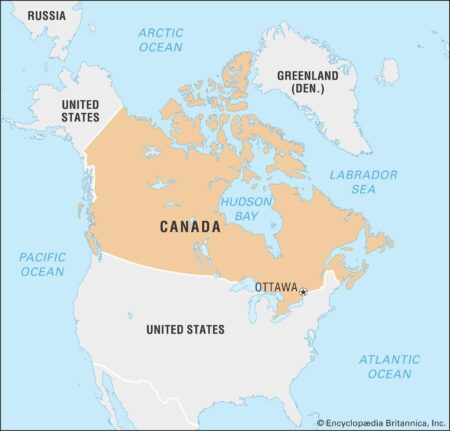Trump ramps up trade tensions with fresh tariffs on Canada and unveils unexpected trade moves. Stay tuned for live updates on the unfolding impact and worldwide reactions!
Browsing: US-Canada relations
The U.S. has dramatically increased tariffs on Canadian goods from 25% to 35%, highlighting urgent concerns over fentanyl trafficking, Reuters reports. This bold step marks a significant escalation in trade tensions between the two neighboring countries
Amid escalating tariff battles, U.S. alcohol sales have plummeted by a dramatic 66%, with Canadian consumers turning away from American spirits in droves. This deepening trade conflict is striking a harsh blow to the U.S. liquor industry
Canadian Prime Minister Carney has reignited trade discussions with the US after Canada decided to withdraw its controversial tech tax. This bold move aims to ease tensions and accelerate progress in bilateral trade talks – AP News
Tensions are soaring as the US and Canada clash over lumber tariffs, shaking up trade and housing markets on both sides. At the core of this heated dispute are fierce battles over pricing and supply fairness, deepening diplomatic strains between these longtime neighbors
The Trump administration’s move to slap a 35% tariff on Canadian goods has ignited fierce tensions between the U.S. and Canada, pushing trade relations to a breaking point and sending shockwaves through industry leaders on both sides
President Trump has announced a striking 35% tariff on Canadian goods, scheduled to kick in on August 1. He warned that even steeper tariffs could be imposed if Ottawa retaliates, escalating the fierce trade showdown between the U.S. and Canada
Former President Donald Trump is gearing up to impose a staggering 35% tariff on Canadian goods, intensifying the trade showdown between the U.S. and Canada, reports The Week. This daring move targets key industries, sending shockwaves through both countries
Canada has stepped back from its digital services tax after President Trump put U.S. trade talks on hold, aiming to ease tensions and protect the crucial trade partnership between the two nations amid escalating economic disputes, CNBC reports
Canada has officially rolled back its digital services tax aimed at US tech giants, marking a bold move to ease mounting trade tensions. Former President Trump fiercely opposed the tax, claiming it unfairly singled out American companies
Gov. Janet Mills presses forward with her Canada tour this Wednesday, strengthening cross-border ties and fueling economic momentum. Her visit highlights vibrant partnerships in trade, environmental efforts, and regional security
Former President Trump and Canadian Minister Carney have kicked off a high-stakes, 30-day sprint to finalize a groundbreaking US-Canada trade agreement, aiming to strengthen economic ties and swiftly resolve long-standing trade disputes, Politico reports
Donald Trump, freshly convicted of a felony, now faces potential entry bans to Canada right before the G7 summit. Officials are weighing the complex legal and diplomatic consequences of barring a former U.S. president from crossing the border
A recent Guardian report reveals a growing wave of Canadians harboring negative feelings toward the US, fueled by concerns over trade policies and fears about threats to national sovereignty. These mounting tensions are straining the bond between the two countries
Canada is gearing up to fast-track crucial nation-building projects in response to recent U.S. policies under former President Trump, aiming to strengthen economic independence and ignite regional growth, government officials reveal
In a spirited rebuttal to former President Trump’s playful notion that Canada might thrive as the 51st US state, former Bank of Canada governor Mark Carney emphatically stated, “Canada is not for sale, ever.” Carney’s bold declaration highlights the unwavering sovereignty of the nation in the face of shifting geopolitical conversations
Kentucky’s bourbon industry is navigating a turbulent landscape as rising trade tensions between the U.S. and Canada cast a shadow over export markets. With potential tariff hikes on the horizon, local distilleries are bracing for challenges that could shake their sales and disrupt the thriving cross-border trade they depend on.
As trade tensions reach a boiling point, Trump’s trade war with Canada is sending shockwaves through the U.S. economy, sparking unexpected repercussions. With the stakes higher than ever, anticipation builds for the upcoming meeting between Trump and former Bank of England Governor Mark Carney.
A recent Al Jazeera article challenges the notion of Canada’s united front against Donald Trump, revealing a complex tapestry of political and societal divides within the nation. The article uncovers a spectrum of opinions that showcase both fervent support and vocal dissent among Canadians when it comes to U.S. policies.
Former President Donald Trump has taken a moment to clarify his intriguing comments about the possibility of Canada joining the United States as the 51st state, insisting, “I’m really not trolling.” His provocative statements have ignited lively discussions and prompted many to ponder the implications for U.S.-Canada relations in today’s charged political climate.



















